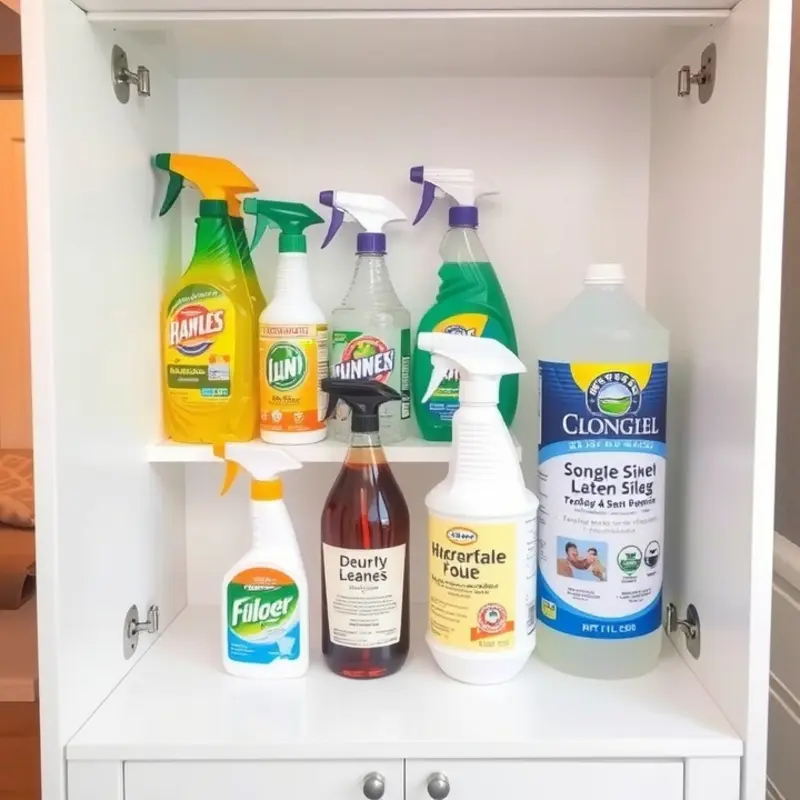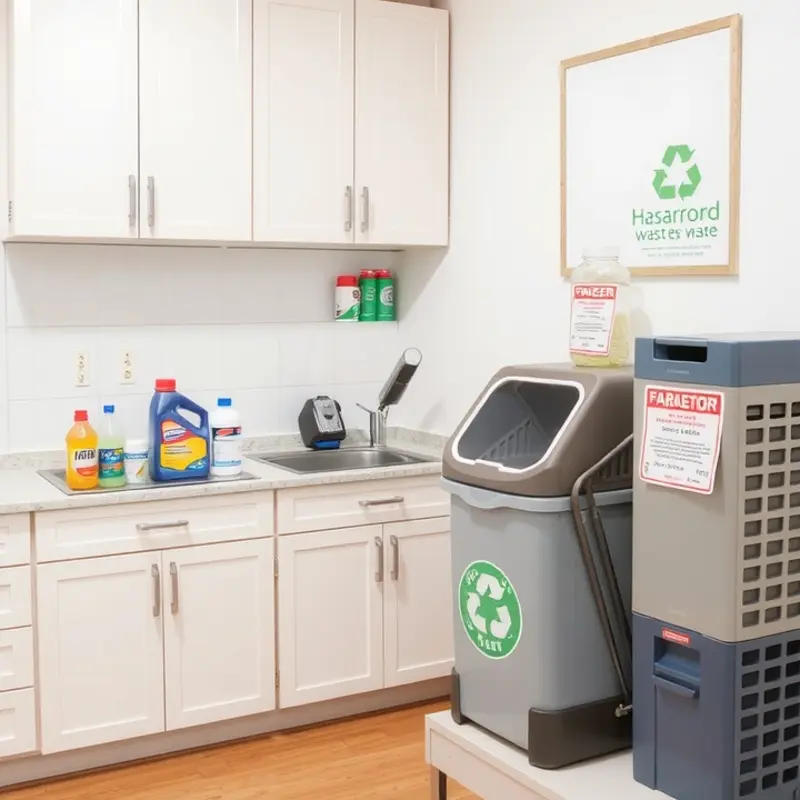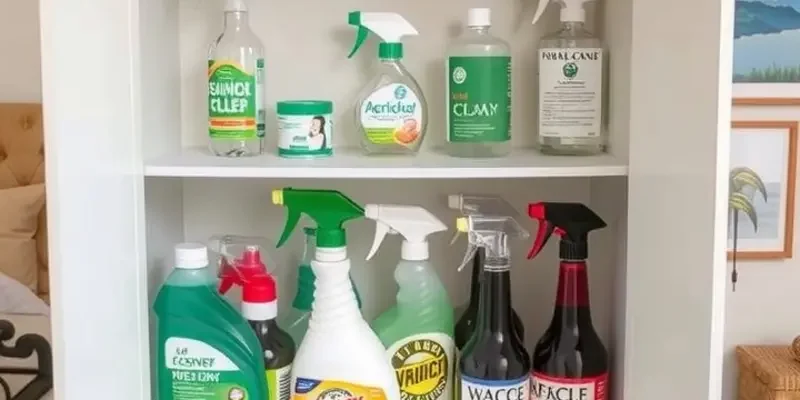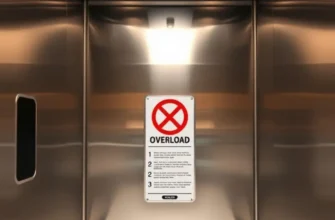Living in an apartment offers convenience, but it also requires insight into maintaining a safe living environment. Chemical safety is an often-overlooked aspect of apartment life for renters. From cleaning supplies to potential hidden hazards, understanding how to handle, store, and dispose of chemicals safely can significantly enhance your well-being. The good news is that you don’t need to be a chemist or a maintenance expert to create a safe home environment. By following straightforward guidelines tailored for renters, you can prioritize safety and security while navigating the world of chemicals. Let’s delve into practical and easy-to-follow strategies that ensure your apartment remains a chemical-safe haven, allowing you to enjoy your living space without worry.
Understanding Common Apartment Chemicals

Living in an apartment means being aware of the various chemicals that you might encounter daily. These substances can be found in household cleaners, paints, and pesticides, each carrying potential risks to your health and environment.
Household cleaners often contain chemicals like ammonia and bleach. While effective at sanitizing surfaces, these substances can irritate respiratory systems and skin. Repeated exposure can lead to more severe health issues over time. It’s important to use these products in well-ventilated spaces and consider safer alternatives, such as vinegar or baking soda, for everyday cleaning needs.
Paints used within apartments might contain volatile organic compounds (VOCs), which can off-gas into indoor air and cause headaches, dizziness, and long-term health issues. When planning to paint, choose low-VOC or VOC-free options. Always ensure windows are open, use fans for ventilation, and if possible, vacate the apartment during and after painting until fumes dissipate.
Pesticides employed for pest control can also harm humans and pets if mishandled. These chemicals are particularly hazardous if ingested or absorbed through the skin. It’s essential only to apply pesticides following label instructions and, when possible, explore non-chemical pest control methods. Installing screens and sealing cracks can be effective in keeping pests at bay without resorting to chemical solutions.
To safeguard your health, familiarize yourself with the products in your home by carefully reading labels and understanding the warnings associated with their use. Labels often include precautionary statements and first-aid instructions. Additionally, consider accessing the material safety data sheets (MSDS) for detailed information on chemical properties and safety measures.
Safe handling practices extend beyond just reading labels. Always wear gloves when using chemicals, ensure ample ventilation, and store products according to the manufacturers’ guidelines, away from heat and out of reach of children and pets. By adopting these practices, you reduce risk while maintaining a clean and healthy living environment.
Resources are available to help you navigate safer products and practices. For instance, creating homemade cleaning solutions can be an effective alternative, minimizing chemical exposure while offering peace of mind. You can find more ideas and methods in our apartment-friendly DIY cleaning products guide, complete with recipes and step-by-step instructions.
Understanding the chemicals in your apartment is a crucial step towards a safe and healthy lifestyle. By being informed, you can make conscious choices and reduce unwanted chemical exposure, ensuring your home is not just a living space but a sanctuary for your wellbeing.
Safe Storage and Disposal Practices

Proper storage and disposal of chemicals in your apartment are key to both personal safety and environmental protection. Ensuring that you store these materials properly can prevent accidents and hazardous exposures.
Safe Storage Tips
Start by keeping all chemicals in their original containers with labels intact. These labels contain crucial information on how to handle and store the product safely. It’s important to use sturdy shelves located away from sources of heat and direct sunlight, as excessive heat can alter the chemicals’ properties, making them more hazardous.
Avoid common storage mistakes such as placing chemicals at low levels that children or pets can easily reach. Instead, use upper shelves or locked cabinets to ensure they are out of reach. For additional safety, consider individual locking mechanisms for particularly hazardous substances.
Store chemicals like cleaning agents separately from food items and never mix them with other substances, as this can lead to dangerous reactions. For those interested in a more organized approach, incorporating proper storage containers and baskets can help improve safety and aesthetics as noted here.
Disposal Protocols
Disposing of chemicals incorrectly can harm the environment and violate local laws. Familiarize yourself with community guidelines for hazardous waste disposal. Some areas offer designated drop-off locations or household hazardous waste collection events to safely discard unused or expired chemicals.
Never pour chemicals down the drain or into toilets, as this can pollute water supplies and damage plumbing systems. Instead, check if your community offers programs for safe chemical disposal or inquire about local hazardous waste facilities.
For items like batteries and electronics, which may contain harmful chemicals, it’s vital to seek specific e-waste disposal options that prevent these elements from entering landfills. Comb through local resources to find the most convenient and responsible disposal method.
Prevention and Community Responsibility
Creating a safer living space isn’t just about individual responsibility. Promoting awareness among fellow tenants can enhance safety for everyone in the building. Share information about proper storage and disposal practices with neighbors or apartment management. Consider community bulletin boards or digital newsletters for disseminating this valuable information.
In summary, being proactive in your approach to storing and disposing of chemicals not only safeguards your apartment but also contributes to broader community well-being. Adhering to best practices helps prevent inadvertent exposure to harmful substances, making your living environment secure and welcoming.
Final words
Ensuring chemical safety in your apartment is an essential aspect of creating a secure and healthy living space. By being informed about the common chemicals you encounter daily, and understanding how to store and dispose of them safely, you take vital steps towards protecting not only yourself but also your community. Remember that small changes in your daily routine can lead to significant improvements in your overall safety. So, engage with the resources around you, and don’t hesitate to ask your landlord or property management about any uncertainties regarding chemical safety. Your home should be a sanctuary, and prioritizing safe living is the key to achieving that peace of mind.









